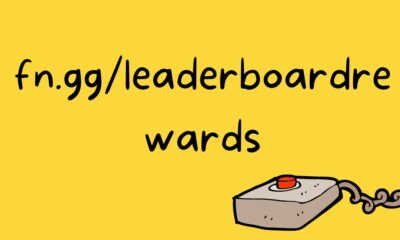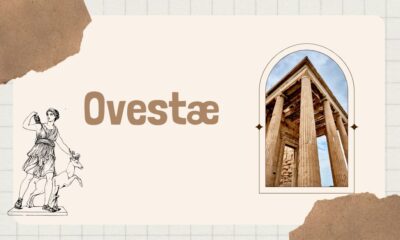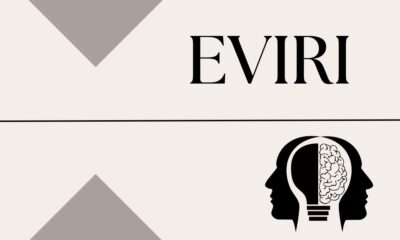EDUCATION
Hire the Right Ghostwriter: Nine Things You Must Do

Are you considering hiring a ghostwriter for your next writing project? If so, you may already have considered all the benefits that come with hiring a ghostwriter for your project. Their expertise, efficiency, and attention to detail are some of the brilliant qualities that make them so sought after.
While everyone is aware of the role of a ghostwriter and what they can do for your project, the biggest challenge may be hiring the right professional for your project. After all, there are so many experts out there, and you only want to seek the services of the best professionals.
If you are not sure where to begin your search, here are some of the most important actions that can lead to the best outcomes for you.
1. Know Your Needs
Before you head out and seek the services of a ghostwriter, take a few minutes to come to terms with why you need the services of the ghostwriter. Do you need a ghostwriter because you lack writing skills or because you simply do not have enough time to get things done by yourself?
In any case, embracing the need holds great importance. Once you have come to peace with the idea, you can start searching for the right professional to match your needs. You will be able to make things so much easier by narrowing down your options.
2. State Your Goals
Now that you have acknowledged your needs, the next important thing to do is to come to terms with your needs. Do you want a ghostwriter to write your manuscript from scratch, or do you have a rough draft in place? Of course, top ghostwriters in the business understand the needs of their clients and adapt accordingly.
Asking yourself what you hope to achieve by partnering with a ghostwriter can help you find the right professional for your needs. Make sure to communicate your goals with the ghostwriter you are considering hiring. This way, you can avoid any problems down the lane in your professional partnership with the ghostwriter.
3. Look on the Right Platforms
Once you have decided to hire a ghostwriter, you will likely head to the browser to look for your options. You will likely be surprised to see so many platforms with promises to get you in touch with the right ghostwriter for your needs.
While having so many options can feel great, remember that every platform is not trustable. It is important to look into how well-reputed a platform is among the communities of people seeking the services of professional ghostwriters.
A reliable platform can increase the likelihood of you getting in touch with a professional you can feel comfortable working with.
4. Determine the Skill Level
Another important thing you must consider before hiring a professional ghostwriter is the level of expertise required for your work. Are you considering publishing a research paper on medical advancement, or is it a blog post for your rising website?
The answer to such questions can help you get closer to the ideal ghostwriter for your needs by further reducing names in your list of ghostwriters to be considered. Once you understand the skill level required for your work, you can avoid overpaying for a simple job or vice versa.
5. Demand the Portfolio
When hiring a ghostwriter, make sure that you do not forget to ask them for their portfolio. A portfolio is essentially a summary of everything you need to know about a ghostwriter before you hire them. Hence, going through this document is important before making a decision.
Of course, everyone wants a ghostwriter they hire to be experienced and excellent at what they do. Looking at their past work samples can make you feel ready to make a call.
In addition to their work samples, you can also view a ghostwriter’s qualifications and certification in their field of work before you make a final decision.
6. Notice Flexibility
Everyone has a unique voice, and you may be worried about this factor when considering hiring a ghostwriter. Of course, you do not want your audience to figure out a change in your tone, style, or voice. Having a flexible writer for this purpose is extremely crucial.
Before hiring a ghostwriter, you must ensure that they can match your voice in their work. You can ask them to provide a free sample to help you make a call. If you are satisfied, you do not have to rush into making any decisions. Make sure you consider several options to find the right match for your needs.
7. Say it Out Loud
While hiring a ghostwriter, you may have a lot of questions and concerns in your mind. You need to remember that you do not have to suppress these concerns, especially if you are hiring a ghostwriter for the first time.
A professional ghostwriter will understand your concerns and address them with patience and open communication. You must also welcome them with the same courtesy and listen to their concerns with empathetic ears.
Of course, the ghostwriter you hire may not know about your industry inside out. They may also have some questions before they start working with you. You need to answer them patiently and honestly to ensure a smooth partnership.
8. Define Your Process
Communication is the key to ensuring that any relationship is successful and working with a ghostwriter is no exception. The most important thing you should discuss with the ghostwriter you are considering hiring is the desired process.
Do you want to be involved in every step of the ghostwriting journey or would it be better to inform you only about the most crucial milestones? Will you be available for interviews, or do you have an assistant who will fill in for you?
It is better for you to have all the important information predefined so that both parties can state how they would like to process it and ensure that you are on the same page.
EDUCATION
Nurturing Young Minds Fostering a Lifelong Love for Learning

In an age where knowledge is at our fingertips, the ability to foster curiosity and instill a love for learning in children has never been more critical. For child development experts, educators, and parents, understanding the importance and methods of nurturing this intrinsic desire to explore can have a profound impact on a child’s lifelong educational journey.
Curiosity is the engine of achievement. This blog post aims to provide practical tips, insights, and examples to help you cultivate a curious and engaged learner. From creating stimulating environments to encouraging question-asking, we’ll explore how to lay the groundwork for a lifelong love of learning.
The Importance of Curiosity in Child Development
Curiosity drives children to explore, ask questions, and seek new experiences. It is the catalyst for learning and cognitive development. When children are curious, they are more likely to engage with their environment, retain information, and develop critical thinking skills. For parents, educators, and child development experts, fostering curiosity is paramount.
Curiosity also contributes to emotional development. When children pursue their interests, they experience joy, satisfaction, and self-confidence. These positive emotions reinforce their desire to learn and explore, creating a virtuous cycle of curiosity and learning.
Furthermore, curiosity promotes problem-solving and adaptability. Children who are encouraged to ask questions and seek answers learn to approach challenges with an open mind and a willingness to experiment. This resilience is a valuable skill that will serve them throughout their lives.
Creating a Stimulating Environment
A stimulating environment is crucial for nurturing curiosity. Surround children with diverse materials, such as books, puzzles, art supplies, and educational toys. These resources should be easily accessible, allowing children to explore and engage with them independently.
Additionally, incorporate elements of nature into the environment. Plants, animals, and natural objects like rocks and shells can spark curiosity and princorporatesss opportunities for exploration. Outdoor activities and nature walks can further enhance this connection to the natural world.
It’s equally important to minimize distractions. Limit screen time and create designated spaces for focused activities. A calm and organized environment allows children to concentrate on their interests and encourages deep engagement with their chosen activities.
Encouraging Question-Asking
Questions are the foundation of curiosity. Encourage children to ask questions about their surroundings, experiences, and the world at large. Respond to their inquiries with enthusiasm and patience, providing answers or exploring the questions together.
Promote open-ended questions that require more than a yes or no answer. Questions like “What do you think will happen if…” or “Why do you think this works?” stimulate critical thinking and deeper understanding. This approach helps children develop their reasoning skills and fosters a habit of inquiry.
Model curiosity by asking questions yourself. Demonstrate that seeking knowledge is a lifelong pursuit and that even adults continue to learn and explore. This sets a positive example and reinforces the value of curiosity.
Integrating Play and Learning
Play is a natural and enjoyable way for children to learn. Integrate educational elements into playtime by providing toys and activities that promote learning. Building blocks, science kits, and creative art projects can all serve as tools for exploration and discovery.
Encourage imaginative play, where children can create their own scenarios and stories. This type of play fosters creativity, problem-solving, and communication skills. It also allows children to experience different perspectives and roles, enhancing their understanding of the world.
Collaborate with children during playtime. Participate in their activities, ask questions, and offer guidance when needed. This involvement shows that you value their interests and are invested in their learning process.
Reading and Storytelling
Reading and storytelling are powerful tools for fostering curiosity. Introduce children to a wide range of books that cover diverse topics and genres. Encourage them to ask questions about the stories, characters, and settings, and engage in discussions that deepen their understanding.
Storytelling allows children to use their imagination and develop language skills. Create opportunities for them to tell their own stories, whether through drawing, writing, or verbal narration. This practice enhances their creativity and communication abilities.
Visit libraries and bookstores together. Explore different sections and allow children to choose books that interest them. This autonomy fosters a sense of ownership over their learning and encourages a lifelong love of reading.
Hands-On Learning Experiences
Hands-on learning experiences are invaluable for nurturing curiosity. Provide opportunities for children to engage in experiments, projects, and activities that require active participation. Science experiments, cooking, gardening, and crafting are excellent examples of hands-on learning.
Encourage children to make predictions, observe outcomes, and draw conclusions from their experiences. This process helps them develop critical thinking and analytical skills. It also reinforces the idea that learning is an active and dynamic endeavor.
Join children in their hands-on activities. Participate in experiments, cook together, or work on a craft project side by side. This shared experience strengthens your bond and shows that learning can be a collaborative and enjoyable process.
Incorporating Technology in a Balanced Way
Technology can be a valuable tool for fostering curiosity when used thoughtfully. Introduce children to educational apps, games, and websites that promote learning and exploration. Ensure that the content is age-appropriate and aligns with their interests.
Set boundaries for screen time to prevent overuse. Balance technology-based activities with hands-on experiences, outdoor play, and face-to-face interactions. This approach ensures that children benefit from the advantages of technology without becoming overly reliant on it.
Supervise technology use and engage with children during their screen time. Discuss what they are learning, ask questions, and encourage them to share their discoveries. This involvement helps them make connections between digital content and real-world experiences.
Building a Supportive Community
A supportive community plays a crucial role in fostering curiosity. Connect with other parents, educators, and child development experts who share your commitment to nurturing a love for learning. Exchange ideas, resources, and experiences to create a network of support.
Participate in community events, workshops, and classes that offer opportunities for learning and exploration. These activities expose children to new experiences and perspectives, broadening their horizons and stimulating their curiosity.
Encourage peer collaboration and group activities. When children work together, they learn from each other and develop social skills. Group projects, team sports, and cooperative games all promote a sense of community and shared learning.
Celebrating Achievements and Efforts
Recognizing and celebrating children’s achievements and efforts is essential for fostering curiosity. Praise their hard work, persistence, and willingness to explore new ideas. This positive reinforcement encourages them to continue their learning journey.
Focus on the process rather than the outcome. Celebrate the steps they take to reach their goals, even if they encounter challenges along the way. This approach teaches children that learning is a continuous process and that mistakes are valuable growth opportunities.
Create a culture of curiosity at home and in the classroom. Display children’s work, share their accomplishments with others, and create rituals that honor their learning milestones. This celebration reinforces the value of curiosity and learning.
Providing Opportunities for Reflection
Reflection is a critical component of the learning process. Encourage children to think about their experiences, what they learned, and how they felt. This practice helps them internalize their learning and make connections between different experiences.
Ask open-ended questions that prompt reflection. Questions like “What did you enjoy most about this activity?” or “What would you do differently next time?” encourage children to think critically and express their thoughts.
Model reflective practices by sharing your own experiences and reflections. Discuss what you learned from a recent project or how you approached a particular challenge. This transparency shows that reflection is a valuable tool for personal growth.
Encouraging Lifelong Learning
Instilling a love for learning goes beyond childhood. Encourage children to see learning as a lifelong pursuit. Share stories of individuals who have continued to learn and explore throughout their lives, and emphasize the importance of curiosity in personal and professional growth.
Provide resources and opportunities for continued learning. Enroll children in classes, workshops, and extracurricular activities that align with their interests. Encourage them to pursue hobbies and passions that inspire curiosity and creativity.
Be a lifelong learner yourself. Pursue your interests, take up new hobbies, and share your learning experiences with children. This modeling demonstrates that curiosity and the desire to learn are valuable traits at any age.
Fostering curiosity and instilling a love for learning in children is a rewarding and impactful endeavor. By creating a stimulating environment, encouraging question-asking, integrating play and learning, and providing hands-on experiences, we can nurture curious and engaged learners.
Remember, curiosity is the foundation of lifelong learning. By celebrating achievements, providing opportunities for reflection, and encouraging a culture of curiosity, we can inspire children to explore, ask questions, and seek knowledge throughout their lives.
For more insights and personalized guidance, consider reaching out to professionals at a preschool in West Jordan. Their expertise and experience can help you create an enriching and stimulating environment for your child, fostering a love for learning that will last a lifetime.
EDUCATION
Discovering Tartan High School Ann Bacon
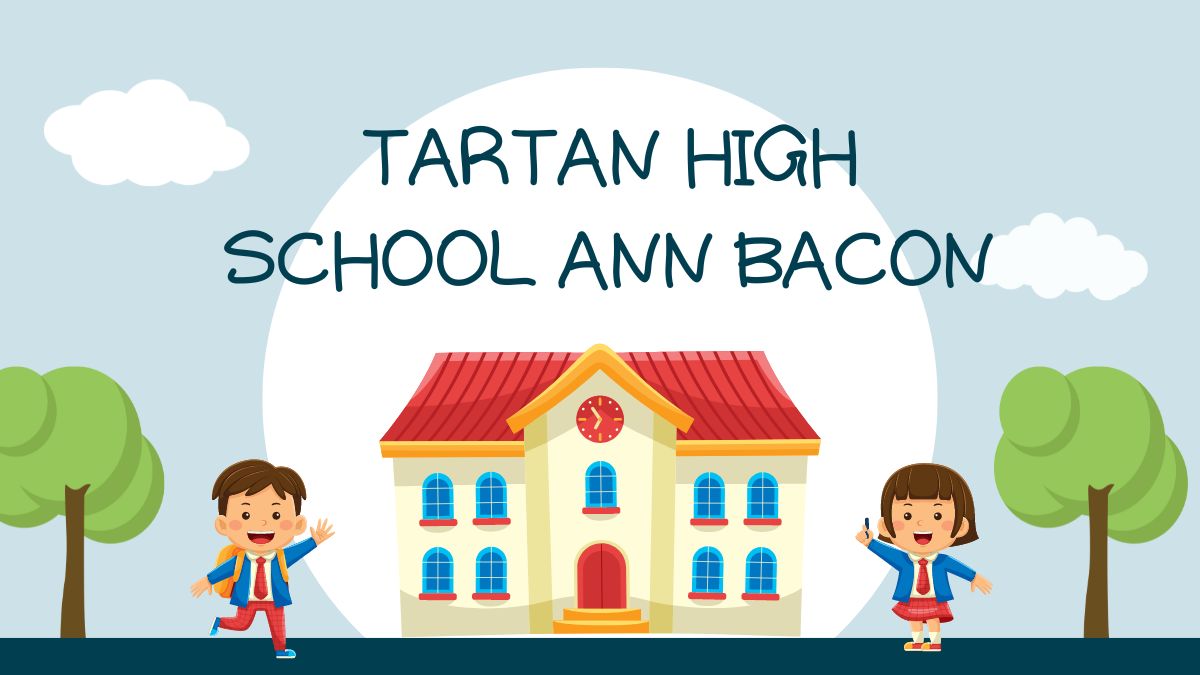
In the quest for academic excellence and future success, scholarships can play a pivotal role. For students at Tartan High School, the Tartan High School Ann Bacon stands out as a beacon of opportunity, providing not just financial aid but a pathway to achieving their dreams. This blog will take you through everything you need to know about Tartan High School, the Ann Bacon Scholarship, and how you can set yourself up for success in your scholarship applications.
An Introduction to Tartan High School Ann Bacon
Tartan High School is known for its vibrant community and commitment to student success. Located, at Tartan High School Ann Bacon offers a variety of programs designed to cater to diverse student interests and career aspirations. From STEM programs to the arts, Tartan ensures that every student has access to quality education and extracurricular activities.
One of the unique aspects of Tartan High School Ann Bacon is its emphasis on real-world experience and community involvement. Through various partnerships with local businesses and organizations, students can gain practical experience while still in high school. This approach not only enhances learning but also prepares students for future challenges.
The school’s dedication to excellence is evident in its scholarship opportunities, particularly the Ann Bacon Scholarship. This scholarship is a testament to Tartan’s commitment to nurturing talent and providing students with the resources they need to succeed.
Who is Ann Bacon?
Early Life and Education
Ann Bacon’s journey began in a small town where she showed early promise in academia and leadership. Her dedication to her studies and her passion for learning earned her numerous accolades throughout her school years. Bacon pursued higher education with the same vigor, eventually earning degrees in both education and public service.
Career and Achievements
Ann Bacon’s career is marked by a series of achievements in the field of education. She has held various roles, from teaching positions to administrative leadership, always with a focus on improving educational outcomes for all students. Her innovative approaches to education and her ability to inspire both educators and students alike have made her a respected figure in the academic community.
Vision and Legacy
Ann Bacon’s vision extends beyond her immediate work, aiming to leave a lasting legacy that empowers future generations. The Ann Bacon Scholarship at Tartan High School Ann Bacon is a part of this vision, designed to provide deserving students with the financial support and encouragement needed to pursue their dreams. Through her scholarship, Bacon hopes to foster a new generation of leaders and innovators who will continue to make positive contributions to society.
Eligibility Criteria for the Ann Bacon Scholarship
The Ann Bacon Scholarship is designed to support students who demonstrate academic excellence, leadership qualities, and a commitment to community service. To be eligible for this prestigious scholarship, students must meet the following criteria:
- Academic Achievement: Applicants must have a minimum GPA of [insert GPA], showcasing their dedication to their studies.
- Leadership and Extracurricular Involvement: The scholarship committee looks for students who have demonstrated leadership skills through participation in school clubs, sports, or community organizations.
- Community Service: A key component of the scholarship is a commitment to giving back. Applicants should have a record of volunteer work or community service.
- Financial Need: While academic and extracurricular achievements are important, the scholarship also considers the financial need of the applicants to ensure that deserving students receive support.
The application process for the Tartan High School Ann Bacon Scholarship involves submitting an application form, transcripts, letters of recommendation, and a personal essay. The essay should highlight the applicant’s achievements, goals, and how the scholarship will help them achieve their dreams.
Application Process for the Ann Bacon Scholarship
Applying for the Tartan High School Ann Bacon Scholarship is a straightforward process, but it requires careful preparation and attention to detail. Here are the steps involved:
- Gather Required Documents: Collect your academic transcripts, letters of recommendation, and any other required documents. Make sure they are up-to-date and accurately reflect your achievements.
- Write Your Essay: The essay is a crucial part of the application. Take the time to craft a compelling narrative that showcases your strengths, goals, and passion for learning. Be honest and authentic in your writing.
- Complete the Application Form: Fill out the scholarship application form with all the necessary information. Double-check for any errors or missing details before submission.
- Submit Your Application: Once you have completed all the required components, submit your application by the deadline. Late submissions are typically not considered, so make sure to give yourself ample time to complete everything.
By following these steps and paying close attention to the requirements, you can increase your chances of being awarded the Ann Bacon Scholarship.
Personal Stories from Past Recipients
The impact of the Tartan High School ann bacon extends beyond financial assistance. It has changed the lives of many students, enabling them to pursue higher education and achieve their dreams. Let’s hear from some past recipients about how the scholarship has influenced their lives.
Sarah’s Journey to Medical School
Sarah always dreamed of becoming a doctor, but the financial burden of medical school seemed insurmountable. With the help of the Ann Bacon Scholarship, she was able to attend her dream university and excel in her studies. Today, Sarah is a practicing physician, and she credits the scholarship for making her dreams a reality.
Michael’s Path to Engineering
Michael had a passion for engineering but lacked the resources to pursue his education. The Tartan High School Ann Bacon provided him with the financial support he needed to attend a top engineering school. Michael is now an accomplished engineer, working on innovative projects that impact the world.
Emily’s Artistic Endeavors
Emily’s love for art was evident from a young age, but pursuing a career in the arts was financially challenging. The Tartan High School Ann Bacon allowed her to attend a prestigious art school and develop her skills. Emily is now a successful artist, with her work displayed in galleries around the country.
These stories are just a few examples of the many lives transformed by the Ann Bacon Scholarship. Each recipient has gone on to make significant contributions in their respective fields, showcasing the lasting impact of this generous award.
Future Goals and Initiatives
Expanding Scholarship Opportunities
Building on the success of the Tartan High School Ann Bacon, there are plans to expand the opportunities available to students. This includes increasing the number of scholarships awarded each year and exploring partnerships with other organizations to provide additional financial support. The goal is to reach a broader range of students and include those from diverse backgrounds and fields of study.
Mentorship Program
In addition to financial support, Ann Bacon aims to establish a mentorship program for scholarship recipients. This program will connect students with professionals in their chosen fields, offering guidance, networking opportunities, and career advice. The mentorship program is designed to ensure that students not only succeed academically but also thrive in their careers.
Community Outreach
Ann Bacon is also committed to giving back to the community through various outreach initiatives. These initiatives will focus on providing educational resources, workshops, and seminars to underserved communities. The aim is to inspire and empower more young people to pursue higher education and make positive contributions to society.
Research and Innovation Grants
Recognizing the importance of research and innovation, there are plans to introduce grants for students who wish to undertake research projects or start entrepreneurial ventures. These grants will provide the necessary funding and support for students to explore new ideas and bring their innovative solutions to life.
By setting these ambitious goals and initiatives, Tartan High School Ann Bacon continues to extend her vision of creating a brighter future for the next generation.
How to Stand Out in Scholarship Applications
Applying for scholarships can be competitive, but there are several ways to make your application stand out. Here are some tips to help you shine:
Highlight Your Unique Qualities
Every student has a unique story to tell. Use your essay to highlight what sets you apart from other applicants. Focus on your achievements, the challenges you’ve overcome, and your future aspirations.
Demonstrate Leadership and Initiative
Scholarship committees are looking for students who have demonstrated leadership and initiative. Highlight your involvement in school clubs, sports teams, or community organizations. Show how you’ve made a positive impact in these roles.
Showcase Your Commitment to Community Service
Community service is a key component of many scholarship applications. Highlight your volunteer work and the contributions you’ve made to your community. Show how your service has shaped your character and influenced your goals.
By following these tips and putting in the effort to create a compelling application, you can increase your chances of being awarded scholarships like the Ann Bacon Scholarship.
Conclusion
Scholarships like the Tartan High School ann Bacon play a crucial role in supporting students’ educational journeys. They provide not only financial assistance but also encouragement and recognition of students’ hard work and dedication.
At Tartan High School, the Ann Bacon Scholarship continues to make a significant impact, enabling students to pursue their dreams and achieve their goals. If you’re a high school student with big aspirations, don’t hesitate to apply for this incredible opportunity.
Frequently Asked Questions
What is the tartan high school ann bacon?
The Ann Bacon Scholarship is a prestigious award designed to support students who excel academically, demonstrate leadership, engage in community service, and have financial need. The scholarship aims to help students pursue higher education and achieve their career goals.
Who is eligible to apply?
Eligibility for the Ann Bacon Scholarship requires candidates to meet specific criteria, including a minimum GPA, demonstrated leadership skills, a history of community service, and financial need. Detailed criteria can be found in the scholarship guidelines.
How do I submit my application?
Applications for the Tartan High School Ann Bacon must be submitted through the official application portal. Candidates need to gather all required documents, write a personal essay, complete the application form, and submit it by the specified deadline.
What should I include in my essay?
Your personal essay should highlight your academic achievements, leadership experiences, community service, and career goals. Be sure to provide specific examples and be honest and authentic in your writing.
When is the application deadline?
The application deadline for the Tartan High School Ann Bacon is typically announced on the official scholarship website. It is essential to check the website for the most up-to-date deadline information and submit your application on time.
Can I reapply if I am not selected?
Yes, applicants who are not selected for the Ann Bacon Scholarship are encouraged to reapply in subsequent years, provided they continue to meet the eligibility criteria. Reapplying can strengthen your application if you have gained additional experience or achievements.
EDUCATION
Mastering Math Skills with Geometry Spot An Innovative Approach
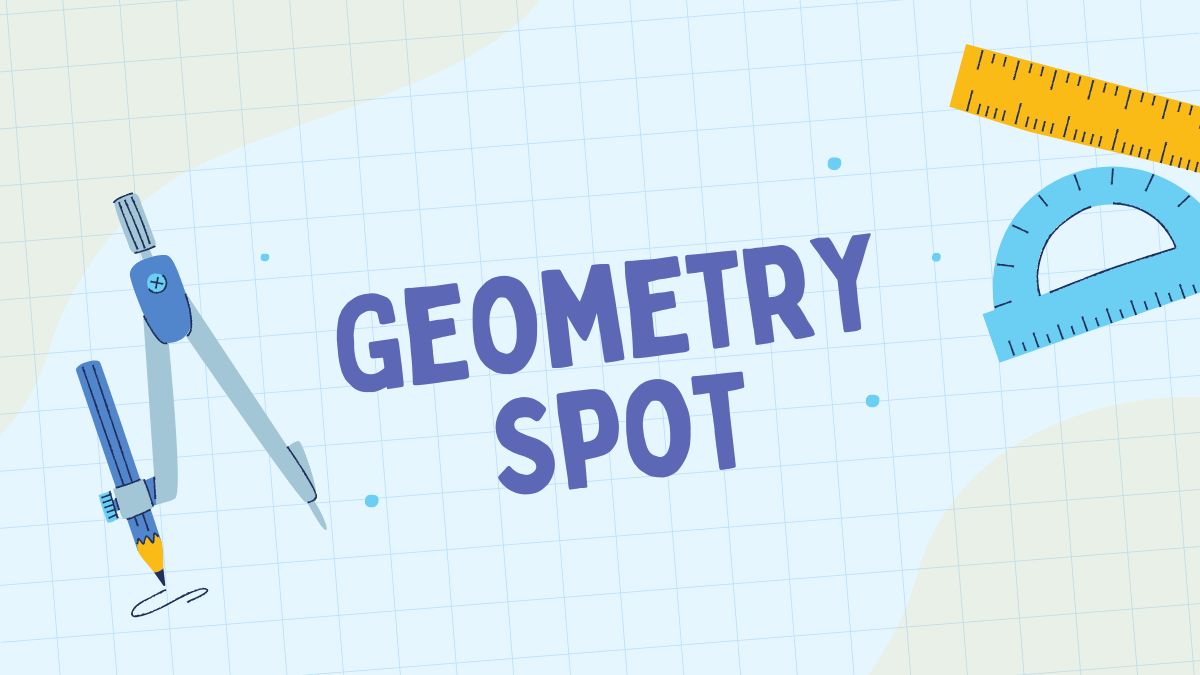
Mathematics is a fundamental skill essential for everyday life. From calculating expenses to solving complex problems, math is everywhere. However, one area often overlooked in math education is the practical application of geometry. Geometry Spots offers a fresh and engaging approach to understanding geometry, making it easier for students to grasp complex concepts and apply them in real-world scenarios. This blog post explores how Geometry Spots can improve mathematical skills, providing valuable insights and tips for students, parents, and educators.
The Importance of Practical Math Skills and geometry spot
Understanding practical math skills is crucial for navigating daily life effectively. From budgeting and shopping to DIY projects and travel planning, math is an integral part of our routine. Geometry, in particular, plays a significant role in various professions, including architecture, engineering, and design. By mastering geometry, students can enhance their problem-solving abilities and critical thinking skills, which are invaluable in academic and professional settings.
The application of geometry spot extends beyond the classroom. It helps in understanding spatial relationships, visualizing objects in different dimensions, and making informed decisions based on geometric principles. Whether it’s designing a garden layout or constructing a bridge, geometry is the foundation of numerous practical applications.
Understanding Geometry Spots Definition, Examples, and Learning Benefits
Geometry Spots are interactive tools designed to make learning geometry more engaging and effective. These spots are essentially visual aids that help students visualize geometric shapes, angles, and relationships. By interacting with these spots, students can explore various geometric concepts, making abstract ideas more tangible and easier to understand.
For example, a Geometry Spot might involve a virtual 3D model of a triangle, allowing students to manipulate its angles and sides to see how changes affect its properties. This hands-on approach helps students grasp complex concepts faster and retain information longer.
The benefits of using Geometry Spots extend to both students and educators. For students, these tools provide a fun and interactive way to learn, reducing the intimidation often associated with math. For educators, Geometry Spots offer a valuable resource for creating engaging lesson plans and assessing student understanding in real time.
Practical Tips for Utilizing Geometry Spots at Home and in the Classroom
- Incorporate Geometry Spots into Daily Lessons
Start by integrating Geometry Spots into your regular math lessons. Use them to explain new concepts, demonstrate problem-solving techniques, and provide visual representations of geometric principles. This approach will help students see the practical applications of what they are learning.
- Encourage Interactive Learning at Home
Parents can use Geometry Spots to reinforce what their children are learning in school. Set aside time for interactive sessions where children can explore different Geometry Spots and complete related activities. This hands-on practice will help solidify their understanding and build confidence.
- Create Collaborative Projects
Encourage students to work together on projects that involve Geometry Spots. Group activities foster teamwork and allow students to learn from each other’s perspectives. Collaborative projects also provide an opportunity for peer feedback and collective problem-solving, enhancing the overall learning experience.
Success Stories and Testimonials from Students, Parents, and Educators
Student Experiences
Many students have reported significant improvements in their geometry skills after using Geometry Spots. For instance, Sarah, a high school sophomore, mentioned that geometry spots helped her visualize complex shapes and understand their properties better. She found that interacting with 3D models made learning more enjoyable and less stressful.
Parent Feedback
Parents have also seen positive changes in their children’s attitudes toward math. John, a father of two, noted that his kids were more excited about their geometry homework after using geomatry spot. He observed that the interactive nature of the spots kept his children engaged and motivated to learn.
Educator Insights
Educators have praised Geometry Spots for their effectiveness in the classroom. Mrs. Thompson, a middle school math teacher, shared that her students were more active participants in lessons involving Geometry Spots. She noticed a significant increase in class discussions and a deeper understanding of geometric concepts among her students.
Exploring the Technology Behind Interactive geomtry spot
Interactive geometry software, like Geometry Spots, leverages advanced technology to create immersive learning experiences. These platforms use 3D modeling, augmented reality (AR), and virtual reality (VR) to bring geometric concepts to life. By providing interactive and visual representations, these tools help students connect theory with practice.
3D Modeling
3D modeling allows students to manipulate geometric shapes in a virtual environment. This hands-on approach helps them understand the properties and relationships of different shapes, making abstract concepts more concrete. For example, students can explore how changing the angles of a polygon affects its overall structure.
Augmented Reality (AR)
AR technology overlays virtual elements in the real world, providing an interactive learning experience. With AR, students can scan physical objects and see geomatry spot shapes and measurements superimposed on them. This fusion of virtual and real-world elements enhances spatial awareness and understanding.
Virtual Reality (VR)
VR takes students on immersive journeys through geometric landscapes. By wearing VR headsets, students can explore geometric shapes and structures in a fully interactive 3D environment. This immersive experience helps them grasp complex concepts and develop a deeper appreciation for the beauty and utility of geometry.
The Future of Geometry Spots Innovations and New Approaches
The future of Geometry Spots is bright, with continuous innovations and new approaches emerging in the field of educational technology. These advancements promise to make learning geometry even more accessible, engaging, and effective.
Adaptive Learning
Adaptive learning technology tailors educational content to the individual needs of each student. By analyzing a student’s strengths and weaknesses, adaptive geomtry spot can provide personalized exercises and challenges, ensuring that each learner progresses at their own pace.
Gamification
Gamification involves incorporating game elements into the learning process. Future Geometry Spots may include interactive games and challenges that reward students for their progress. This approach makes learning fun and motivates students to actively participate in their education.
Collaborative Platforms
Collaborative platforms will enable students and educators to work together in real-time, regardless of their physical location. These platforms will facilitate group projects, discussions, and peer-to-peer learning, fostering a sense of community and collaboration in the virtual classroom.
Implementing Geometry Spots in Diverse Educational Settings
Elementary Schools
Introducing geomatry spot at an early age can spark an interest in geometry among young learners. Teachers can use these tools to create playful and engaging activities that align with basic geometric concepts, such as shapes, lines, and symmetry. Interactive games and colorful visuals keep younger students excited and eager to participate, laying a strong foundation for future learning.
Middle Schools
In middle schools,geomtry spot can help bridge the gap between elementary concepts and more advanced geometric theories. Teachers can design lessons that delve deeper into properties of shapes, transformations, and theorems. Projects involving real-world applications, such as designing simple structures or artwork using geometric principles, help students understand the relevance and utility of their math skills.
High Schools
High school students benefit from Geometry Spots through more complex explorations, including Euclidean geometry, trigonometry, and coordinate geometry. These tools can support the visualization of abstract concepts and theorems, aiding students in forming logical connections. Teachers can assign projects that require critical thinking and problem-solving, using Geometry Spots to simulate real-world problems and geometric proofs.
Homeschool Settings
Geometry Spots offer great flexibility for homeschool environments, providing resources that cater to varied learning styles and paces. Parents can customize lessons to fit their children’s needs, using interactive modules to teach and reinforce geometric concepts. The autonomy to explore these tools allows students to take ownership of their learning, encouraging self-discipline and motivation.
Special Education
In special education, Geometry Spots can be adapted to meet the unique needs of students with learning differences. The visual and interactive nature of these tools can make geometry more accessible, providing alternative ways to grasp complex ideas. Features such as adjustable difficulty levels and sensory-friendly designs ensure that Geometry Spots are inclusive and supportive of diverse learning requirements.
Training and Professional Development for Educators
Workshops and Seminars
Providing educators with comprehensive training through workshops and seminars is crucial for the successful implementation of geomtry in classrooms. These sessions can cover a range of topics, from the basics of using the software to advanced techniques for integrating it into lesson plans. Hands-on activities and demonstrations allow teachers to experience the tools from a student’s perspective, equipping them with practical knowledge and confidence.
Online Courses and Webinars
Online courses and webinars offer flexibility for educators to learn at their own pace and convenience. These digital learning options can include video tutorials, interactive modules, and discussion forums where teachers can collaborate and share experiences. Continuous updates and new content can be provided to keep educators up-to-date with the latest features and instructional strategies.
Peer Mentoring and Support Networks
Establishing peer mentoring programs and support networks can enhance the professional development of educators. Experienced teachers who have successfully incorporated Geometry Spots into their curriculum can mentor their colleagues, providing guidance and sharing best practices. Support networks, both online and in-person, create a community where educators can ask questions, exchange ideas, and offer encouragement.
Certification Programs
Certification programs can formally recognize educators who have demonstrated proficiency in using Geometry Spots. These programs can validate a teacher’s skills and commitment to innovative teaching methods, boosting their professional credentials. Certified educators can also serve as ambassadors, promoting the use of Geometry Spots and training others within their schools or districts.
Conclusion The Ongoing Importance of Practical Math Skills
In conclusion, practical math skills are essential for success in both academic and professional settings. Geometry Spots offer a powerful tool for enhancing these skills, providing interactive and engaging learning experiences for students, parents, and educators.
By incorporating Geometry Spots into daily lessons, encouraging interactive learning at home, and creating collaborative projects, students can develop a deeper understanding of geometry and its real-world applications. The positive feedback from students, parents, and educators highlights the effectiveness of this approach.
The technology behind interactive geometry software continues to evolve, with advancements like 3D modeling, AR, and VR paving the way for even more immersive learning experiences. The future of Geometry Spots looks promising, with innovations such as adaptive learning, gamification, and collaborative platforms on the horizon.
To explore the benefits of geomtry spot for yourself, consider signing up for a free trial or joining our community of learners. Together, we can unlock the full potential of practical math skills and inspire a new generation of confident, capable mathematicians.
FAQs
What is a geomatry spot?
Geometry Spots is an interactive software designed to enhance the learning and teaching of geometry through engaging and dynamic tools. It supports various educational settings, including traditional classrooms, homeschool environments, and special education.
How can geomtry spot be used in classrooms?
Teachers can integrate geomatry spot into their lesson plans to provide visual and hands-on learning experiences. The software can be used to demonstrate geometric concepts, assign interactive projects, and assess students’ understanding through various activities and exercises.
Is Geometry Spots suitable for all age groups?
Yes, geomatry spot offers resources tailored for elementary, middle, and high school students. The software’s adjustable difficulty levels and diverse activities ensure that it can support learners of different ages and skill levels.
Can Geometry Spots be used for homeschooling?
Absolutely! Geometry Spots provides parents with flexible tools to customize their children’s learning experiences. The interactive modules and visual aids help reinforce geometric concepts, making it an excellent resource for homeschool education.
Are there training resources available for educators?
Yes, geometry Spots offers a wide range of training resources, including workshops, online courses, webinars, and certification programs. These resources equip educators with the knowledge and skills to effectively use the software in their teaching.
Does geomatry spot support special education?
Geometry Spots are designed with inclusivity in mind. Its visual and interactive nature can be particularly beneficial for students with learning differences. Features such as adjustable difficulty levels and sensory-friendly designs ensure that all students have access to quality geometry education.
What future advancements can we expect from Geometry Spots?
The future of geometry Spot includes advancements in 3D modeling, augmented reality (AR), and virtual reality (VR), providing even more immersive learning experiences. Innovations such as adaptive learning, gamification, and collaborative platforms are also on the horizon.
How can I get started with geomatry spot?
You can start by signing up for a free trial on our website. Join our community of learners and educators to explore the full benefits of Geometry Spots and unlock the potential of practical math skills.
-

 GAMES1 year ago
GAMES1 year agoRise with fn.gg/leaderboardrewards to the Top in Fortnite Leaderboard Rewards
-

 ENTERTAINMENT1 year ago
ENTERTAINMENT1 year agoOvestæ: Exploring The Ancient Roots
-

 BUSINESS1 year ago
BUSINESS1 year agoAll You Know About : Evırı
-

 TECHNOLOGY1 year ago
TECHNOLOGY1 year agoExploring the www. topicsolutions.net
-

 LIFESTYLE1 year ago
LIFESTYLE1 year agoươmen: Pillar of Empowerment
-

 TECHNOLOGY1 year ago
TECHNOLOGY1 year agoWhat is Geöe?
-

 EDUCATION1 year ago
EDUCATION1 year agoBOOK32: Reader’s Haven
-

 ENTERTAINMENT1 year ago
ENTERTAINMENT1 year agoVyvymanga: Online Platform dedicated to Manga Readers

